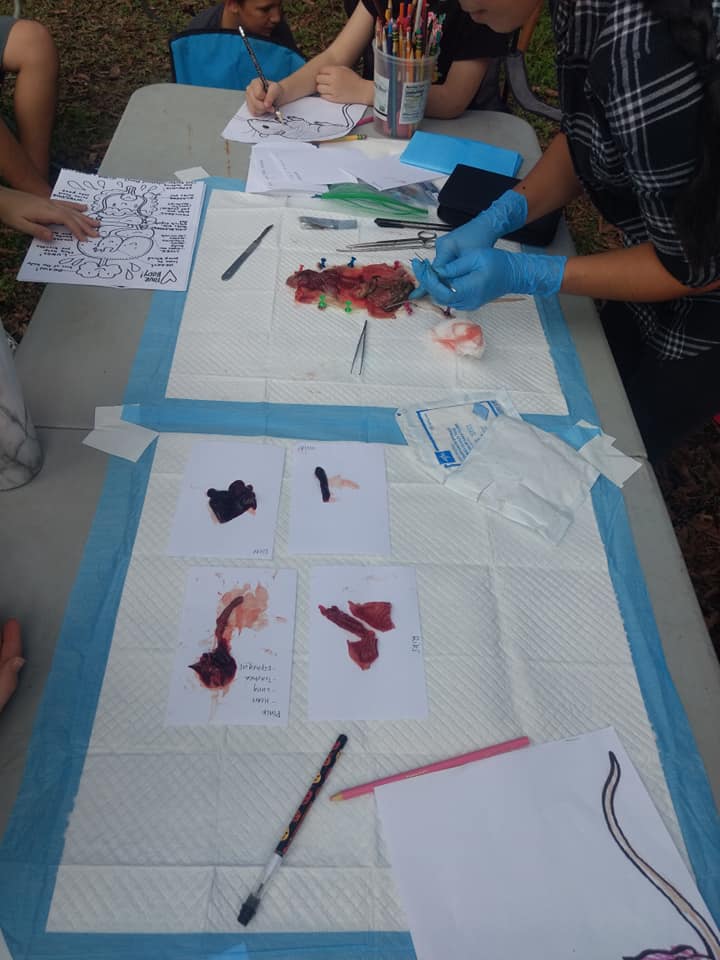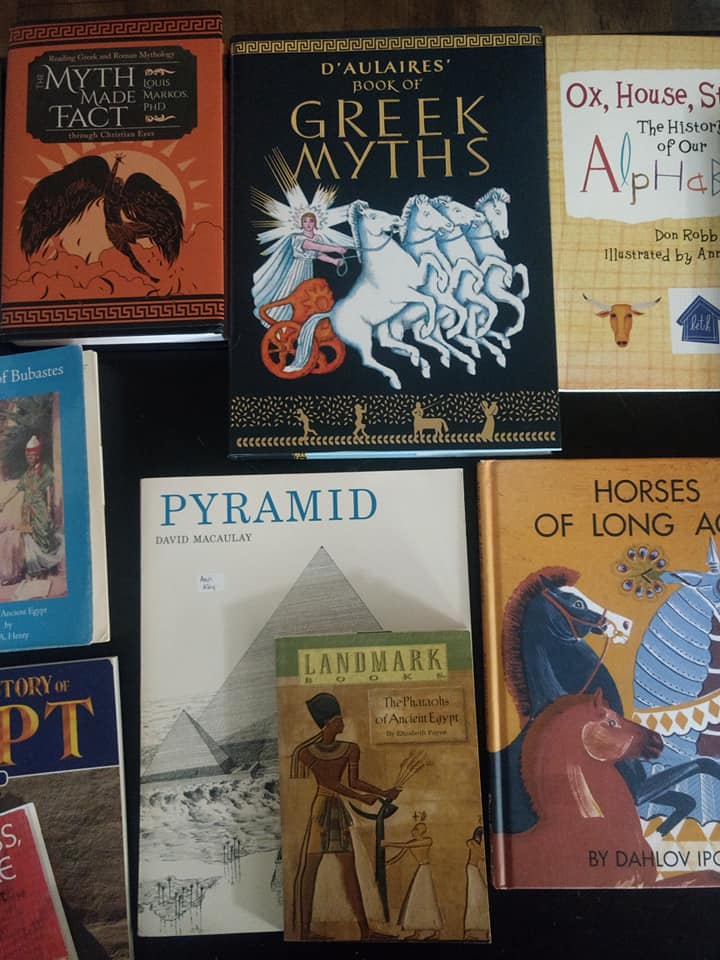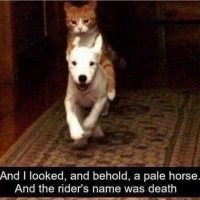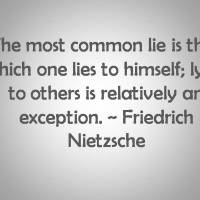A Year of Homeschooling Peacefully in the Ancient Times
The school year began, for me, in a bit of chaos. My son was born over the summer. My mother had died. In addition to my newborn son, I had two extra children in my household. I was overwhelmed by the impending doom of our co-op. I could sense it coming, but I honestly thought it was a year or two off and I was committed to giving it my kiddo’s fifth grade year before bailing, believing that the proverbial poop would hit the fan a few months after my departure. (It hit sooner.)
Still, after the children went back to their own home. The co-op dissolved and something new began… we found ourselves homeschooling through the ancients in our own little Pax Romana. We declared this our year of homeschooling in peace and it has been phenomenal.
As usual, we began our dive into Ancient history with the Epic of Gilgamesh. After years of reading the picture book trilogy by Ludmila Zeman, it was time to upgrade to a a more “grown up” version of the story. Gilgamesh the Hero by Geraldine McCaughrean was a perfect bridge for the dialectic stage, from elementary to the full translations of high school. Kiddo was struck by the subtle differences, the pieces that make it suitable for older readers, but not for younger ones. As a child who doesn’t like change, learning that different adaptations have a different flow and feel to them has been a challenge. As a ten/eleven year old, she has now been exposed to several adaptations of the Gilgamesh myth and also has a much broader view of near eastern cultures and history. I’m happy to say, my homeschooler as an elementary graduate has a more thorough understanding of history and other people groups than I did as a public school high school graduate. These are the goals, and we’re winning.
I read The Golden Bull by Marjorie Cowley out loud to two ten year olds and an eight year old. This is right about the time we started making our timeline (using Amy Pak’s Home School in the Woods History Through the Ages Record of Time), and having the kids perform narrative plays of what I had just read to them while I nursed my infant. Our house is fairly full of music, so naturally we ended up making a lyre (and some ukuleles) as a hands on craft which in turn became props in our living room productions of The Golden Bull.
Meanwhile, we were also re-reading Susan Wise Bauer’s Story of the Wold Volume One for the third time, reading Story of Civilization for the first time, plucking our way through the Usborne Encyclopedia of the Ancient World, reading the Old Testament, and for good measure added a plethora of picture books I had on hand from the last time we studied the ancients.
Ox, House, Stick by Robb was discovered while we studied the Phoenicians and the alphabet. This one came highly recommended, and the kids liked it ok, but it wasn’t my favorite. We also re-read The Riddle of the Rosetta Stone by Giblin, that one is always fun and fascinating.
We had some extensive discussions regarding laws and lawmakers. The kids each read a biography on Hammurabi, the one by Mitchell Lane Publishers was the best, we thought. A few rabbit trails later and we spent an afternoon on You Wouldn’t Want to Be an Assyrian Soldier.
As we moved into the time of the Egyptians, we tackled Green’s Tales of Ancient Egypt, The Landmark Book of Pharaohs by Payne, Mara: Daughter of the Nile by McGraw, The Golden Goblet also by McGraw, and The Cat of Bubastes by G. A. Henty. Kiddo hated Mara, I thought it was great. I found the Golden Goblet on the boring side, Kiddo loved it. The fun thing about reading so many books together are the discussions. Homeschooling is basically book club every day. I love book club!
One of my pet topics of study as an adult is the Pharaoh Hatshepsut. I find her to be the most intriguing and have some theories as to where her place in history overlaps with our knowledge of biblical history. The kids each grabbed a biography and I re-read a few of my own. Although I usually love National Geographic stuff, our favorite is the one put out by Compass Point Books. Compass Point Books, for the most part, is a huge go-to in our house. If I see one, I grab it, often accidentally purchasing duplicates. They are more thorough than the Who Was series, but less daunting than the DK series, although we own a good amount of both of those as well. At this point, Kiddo tried her hand at her first full length essay, complete with me dragging out my typewriter for her to type the finished product.
I also love David MacCauley books and we read Pyramid. Kiddo does *not* love David MacCauley books, which is unfortunate because I think I own them all. She preferred diving into Mummies, Tombs, and Treasure and the Magic Tree House Research Guide: Mummies & Pyramids. Side note to the Magic Tree House books: Although the fiction books are overly simplistic and quickly outgrown, we have found that the research guides last all of the elementary school years and are revisited often. We will keep the research guides long after the fiction series is purged, I believe. As homeschool eccentrics this study coincided with our anatomy studies in science. The kids got the chance to observe a profession necropsy of a rat and later Kiddo tried her hand at mummifying the spare dead rat. AmenRAThep still lies in our garage buried in salt in his intricately decorated plastic tomb. An expository essay on the mummification process ensued. More tapping away at my now “vintage” typewriter… More revisiting all our favorite picture books (Mummy Cat by Ewert just never gets old and Tutankhamen’s Gift is lovely) as well as the HMNS for the Ramses exhibit.



When we wrapped up our anatomy studies, the mummification process became a nice bridge into our archaeology unit. We used the Wonders of Creation series from MasterBooks.com. The Archaeology Book by David Down and The Geology Book by Dr. John D. Morris led beautifully into The Fossil Book by Gary Parker. We’re definitely going to continue through this series into Caves, Minerals, Oceans, Weather, and Astronomy as we move through the timeline to the middle ages.
I love multi-sensory learning whenever possible, so during all this we also tried our hands bringing our history studies to our taste buds. One of my favorite cookbooks to pull out during the ancient years is The Philosopher’s Kitchen. It’s full of ancient flavors that make use of modern kitchen routines so you can enjoy the taste of the times without slaving away. We have recipes we’ve attempted to make the way they would, but I’m content with learning to use the kitchen I have instead of trying to time travel. Kiddo found some easy kid recipes in various places and we also enjoyed some Mesopotamian sweet breads she made herself that were rather tasty. Cardimon and honey is a lovely flavor combination.
Another aspect to unit studies/ studying all disciplines through the timeline, is that we tried Spelling You See for the first time and used the Ancient (level F) package. Spelling You See was developed by a reading specialist who encourages identifying word patterns and color coding them. Married with dictation of an entire topical paragraph, this curriculum abandons the by rote memorization of a list of spelling words. I find this method useful, but we will also continue with our Spelling Workout books after we’ve completed all the lessons in this book, as spelling is a subject we’re going to have to continue to work on long after some of our peers have abandoned it as a subject. I’m ok with this, Kiddo tests gifted in most subjects but spelling is a struggle. We remind ourselves daily that we can do hard things (through Christ) and that it is ok to not be perfect at everything as long as we’re trying our best.
Adara by Gormley, God King by Williamson (we had already read Hittite Warrior years ago), and Days of Elijah by Noble were read as we continued our studies of the Old Testament as well as Herodotus. (Kiddo loved Days of Elijah, I tried to read it with her but I found the writing style very off putting, I honestly cannot remember if I finished it or not.) Kiddo re-read Bendick’s Herodotus & The Road to History, we both love all things Bendick. I wanted to re-read Herodotus’s book as the last time I had read it Kiddo was two or three, but time got away with me. We were knee deep in fractions because math may never be abandoned, no matter how many people die (we had four significant deaths this season), or how tired you may be. What kept our mind clear enough to finish our Singapore 4a&4B curriculum and get through Math-U-See Epsilon, was the fact that we were taking time to study God’s word daily. We weren’t just trying to incorporate theology in our homeschool, my husband was actually leading bible study every evening (and had been since the start of our marriage in 2020); and in addition to that, upon moving into our new house in 2021 we began using the Simply Charlotte Mason Scripture Memory System. I found a reasonably priced recipe box on Amazon and started adding index cards as per the instructions of the method (follow the link). Focusing on hiding God’s Word in your heart, opens the mind up for so much more, and in all the crazy we prayed for God to help us be good stewards of our brains and our time and the results have been delightful.
With all this Bible study, Kiddo requested to eventually study Aramaic and Hebrew and Koine Greek, but we decided to wait as we continue on our Latin studies. One thing at a time, and we still have some Latin books to complete.
Now, for the Greeks… The D’Aulaires have a lovely Greek Myths book. In addition to that, Kiddo read more books on Homer’s work than I can count. The highlight reel were repeat romps through the Mary Pope Osborn adaptation, Sutcliff’s Black Ships Before Troy and The Wanderings of Odysseus, and Lively’s In Search of a Homeland. She also read for the first time Aleta and the Queen, Flaxman’s The Iliad of Homer, and Colum’s Children’s Homer. By the time she reads Homer’s unabridged work, she’ll know the stories so thoroughly I’m hoping the poetry of it will shine through and delight her in ways that evaded me when I blindly trudged through it for the first time because I had no previous knowledge of context to work from. I had planned for us to read Edith Hamilton’s Mythology, but when you’re done, you’re done. So we’re saving Hamilton for the next time around, in four years.
Bendick’s Archimedes and the Door of Science as well as The Librarian Who Measured the Earth by Lasky are must haves. We have read them every time we’ve studied the Ancients and sometimes we pluck Lasky’s picture book up to read just for kicks.
Rome Antics by MacCauley was beautiful. It takes about ten minutes to read, but days to absorb if you want to go back and study all the architecture as well. I didn’t dwell on it too much as she’s already read Where Were the Seven Wonders of the Ancient World? and Where Is the Parthenon? (we did a hands on project with friends building the Parthenon out of marshmallows which was fun). While on the Who/What/Where series kick, she also read Where Is the Great Wall? We’ve studied ziggurats and pyramids and a number of other structures this year, and now that we are currently studying Rome, I’m going to have to collect my thoughts and make proper plans to lay the groundwork for a strong introduction to architecture. In the meantime, now that summer is here, we’re listening to the Rise of Rome on Wondrium, and plucking through our never ending reading list.
I’ll continue to update as we make our way through the last hundred years or so before Christ, through the New Testament, and onto the invasion of Britain. We already studied Pompeii and went to the museum exhibit with our co-op, and volcanoes were studied in passing while we raised money for the Pacific Rim Awana programs and made a homemade volcano during a friend-date at our house. (I think we may start a science club…)
(We got a taste of Asian mythology and folklore with some read alouds and picture books, but I think we will revisit them in a more heavy handed way when we study Marco Polo again. If you’re looking for titles, I recommend perusing everything by Demi as well as 101 Read-Aloud Asian Myths.)
This school year has been our most relaxing yet, despite the chaos of life, and we hope to continue this pattern in the years to come.
To Be Indiana Jones…
 Title: Babylonian Life and History
Title: Babylonian Life and History
Author: E. A. Wallis Budge
Genre: History/ Archeology
So, I want to be Indiana Jones when I grow up. Who doesn’t? Although a friend advised me that to be Andi “Tex” Klemm would be far cooler, and I have suggested that I just might have to embroider this onto a fedora.
In the meantime, I study as much history as I can. I also subscribe to the Archeology magazine. And the way I go all fan-girl at the Houston Museum of Natural Science, well, it’s part of what makes me awesome… right?
So my “grown-up reading time” during my 5 year old’s ancient history year was Babylonian Life and History by E. Wallis Budge. It was neat teaching her the bare bones of the Babylonians and Assyrians out of Susan Wise Bauer’s Story of the World, and memorizing tidbits from the Classical Conversations curriculum, while getting a deeper dose for myself. I’ll continue this effort of furthering my education while I begin hers as long as I can. If you don’t have time for that, I understand completely; but if you do, this is a worthy book to select.
E.A. Wallis Budge never ceases to amaze me. Every time I think I have everything he ever wrote I think I find 3 new titles. He’s so prolific and seems to be the end all be all on Ancient History. Found some tidbit of from the ancient world you’d like to investigate? – there’s probably a Budge book for that. His prose is nothing special, and at times even a little boring, but I love reading his work and hope to read it all before I die.
Discovering the Ice Age
Magic Tree House Adventures in my library with my toddler. I can’t wait to take her to the Natural Science and History museum! I think it’s about time for her first trip.
She is completely enthralled with Jack and Annie now, and begs for the next story as soon as we’ve finished the last. For parents just coming in for these blog posts, it helps to have some kind of tactile activity and/or lots of related picture books available while toddlers listen to chapter books.
She was really into the bits about the Woolly Mammoths. We learned from Mary Pope Osborne’s research guide that there were different kinds of mammoths: Columbian Mammoths were the biggest, Woolly Mammoths the second largest, and there were smaller ones called Pygmy Mammoths. Of course, a two-year old sees these different mammoths and calls them Daddy Mammoth, Mommy Mammoth, and Baby Mammoth. It’s ok, we still have time to figure it all out.
My child is enamored by sharp teeth and weapons. She also likes maps and any time a location is discussed in a history book she wants to know where it is in relation to Texas and Virginia. Texas because that’s where she’s from, and Virginia because that’s where Pocahontas met John Smith. This was the topic of conversation when the Giant Beavers of North America were discussed during our Ice Age study.
We prefer the Life in the Ancient World book over the Early Humans book. It has a lot more detail, it WILL be used as our first official History textbook and I already have the lesson plans blocked out. There are projects scattered throughout, both crafty and educational, and I think it is a must have homeschooling tool – especially for those pursuing a classical route. Rocks and Fossils is a really awesome book for an older child. I think around ages 8-11 this is going to be a household favorite.
Homeschooling a 2 Year Old
Looks like this…
I read Magic Tree House #3 Mummies in the Morning and its companion research guide Mummies and Pyramids while she looked at lots of pictures. The books with pictures were The Kingfisher Atlas of the Ancient World, a Reader’s Digest What Life Was Like, a coffee table book called The Pyramids and Sphinx, and a hardback I plan to use as a textbook when we do this again called Life in the Ancient World. I can’t wait to dive into that last one with her. It has activities and projects and all sorts of fun things.
Then we learned that P is for Pyramid. After several pictures, lots of blue lines, a few attempts to write some letters, she can at least say the word and identify the drawing – mostly – sometimes she says triangle or boat instead. I think she sees triangles and thinks of the sails on a crude drawing of a sailboat.
Anyway, that quickly turned into this:
And that’s what homeschooling a two year old looks like.

















